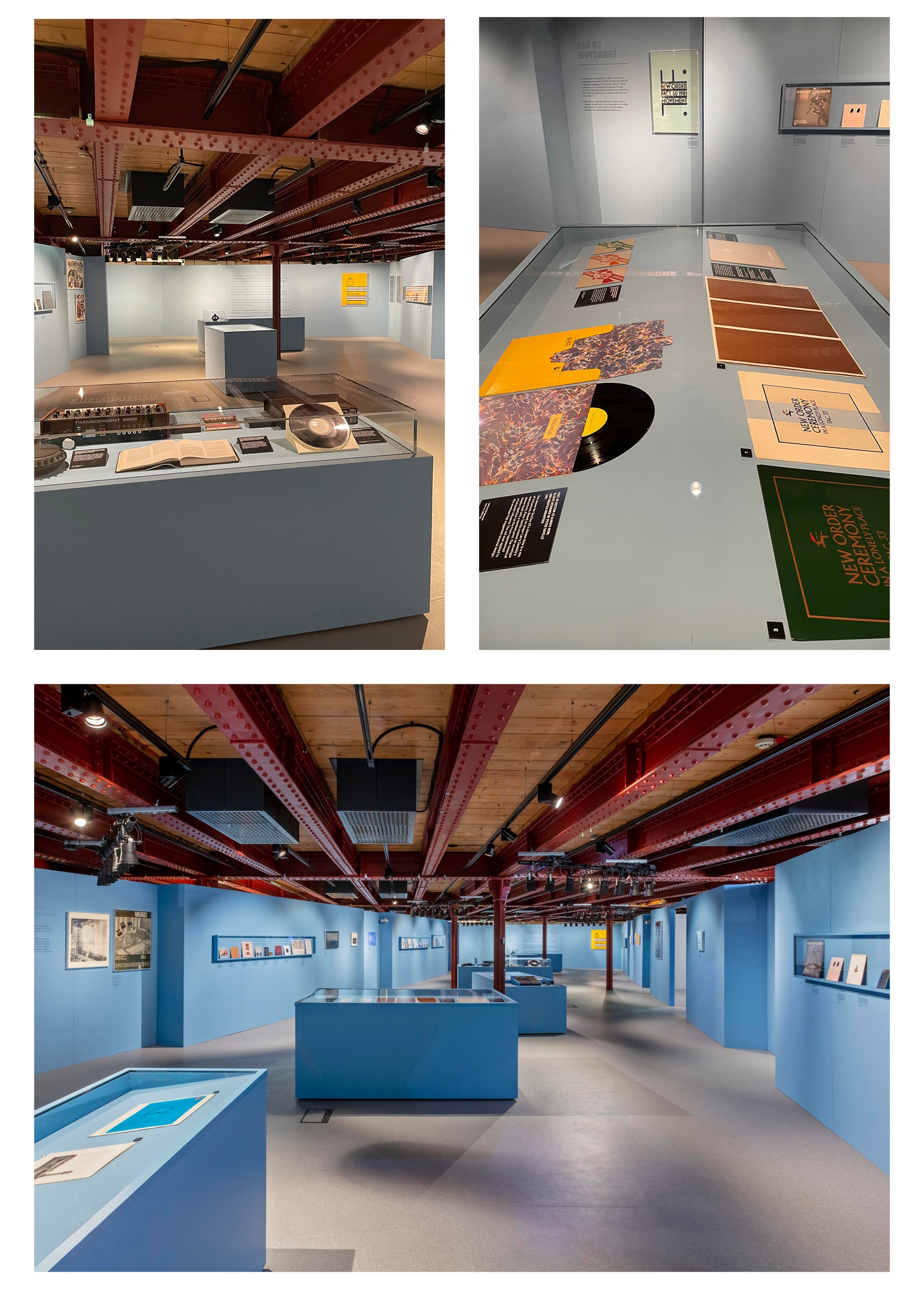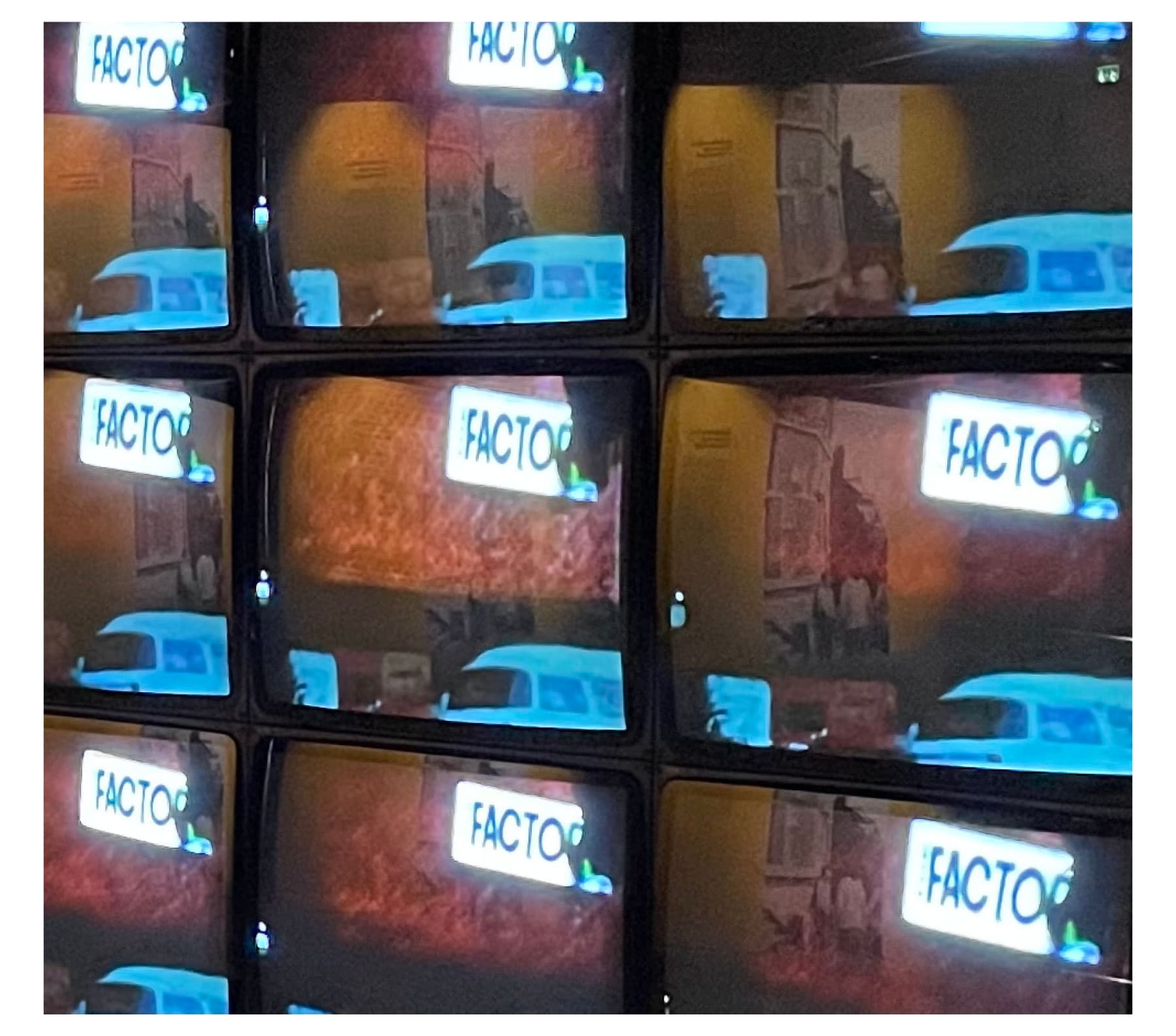Telling the story of Factory Records’ early years from 1978 to 1982, 50 artefacts have been chosen from the official Factory catalogue, including creations from Joy Division, New Order and The Durutti Column, as well as work from Peter Saville, previously unseen items from the Factory archives, and objects loaned from the estates of both Tony Wilson and Rob Gretton, the former manager of Joy Division and New Order.
Situated at Manchester’s Science and Industry Museum with curation and support from Jon Savage, Mat Bancroft, and Stuart Wheeley at Warner Music UK, the exhibition plays host to an immersive understanding into the world of Factory Records. Experience a night out with a tribute to The Factory night at the Russell Club with technologies that made the label’s sound so unique, including a mixing desk and synthesiser.
SEVENSTORE spoke to one of the curators of the exhibition, Mat Bancroft about how it came to fruition, the distinctive voice of Factory Records and why it has transcended into the fashion world of many present eras.
 SEVENSTORE: Could you introduce yourself & tell us a bit about the role you played in the exhibition of Use Hearing Protection: The Early Years of Factory Records?
SEVENSTORE: Could you introduce yourself & tell us a bit about the role you played in the exhibition of Use Hearing Protection: The Early Years of Factory Records?Mat: Hi, I’m Mat Bancroft, independent Curator, Archivist and Art Director.
I’d worked on the exhibition True Faith in 2017 at Manchester Art Gallery which was part of MIF and was about the artistic legacy and influence of Joy Division and New Order. It was curated by Matthew Higgs who is the Director of White Columns in New York, and the Writer and Curator Jon Savage. Following that I was approached about developing an exhibition that acknowledged the 40th Anniversary of Factory Records. I suggested Jon work on the project with me and we co-curate and so we worked up the idea of focussing on the early years of Factory, looking at some of the influences and limiting our scope to numbers 1-50 in the Factory cataloguing system, which took us from Peter Saville’s iconic first poster for The Factory Club to New Order’s debut album Movement.

SEVENSTORE: How did the exhibition come to fruition?
Mat: After developing the idea Warner Music UK came on board as a supporter and I approached Chelsea Space in London with the proposal which they were keen to be part of. We had initially looked to secure a Manchester venue but for various reasons it wasn’t possible at the time. For the exhibition at Chelsea Space we had loaned items from Tony Wilson’s Archive, held at the Science + Industry Museum and that began conversations with Jan Hicks who is the Curator of this exhibition at S+IM about the exhibition moving there and expanding in content and context but still staying within the FAC 1-50 range.

SEVENSTORE: Why was it so important to highlight the early years of Factory Records?
Mat: We felt that it was a period that had been underexplored in exhibition, both in relation to the influences behind Factory and the direct creative involvement of the five Factory Partners. Like the start of any major project or company or idea this is Factory in its purest form, idealistic, exciting, inclusive, brave, intelligent, diverse. Factory’s focus was never money, the quality and integrity of the idea and the presentation and impact of the ‘artefact’ was always more important and this early period is free of the financial issues Factory would encounter in later years.

SEVENSTORE: What makes this exhibition a step forward from the display hosted at Chelsea Space, London in 2019?
Mat: The exhibition at the Science + Industry Museum expands in both scope and scale. It’s also moving from an art gallery to a museum environment and so it needs to be curated in a slightly different way. Chelsea Space is a perfectly formed small scale space and we liked that the majority of the items were contained together in a single room. It allowed you to take in the whole 1-50 catalogue in one go - with supporting materials and consider just how much amazing diverse work had been created in a four-year period.
S+IM is naturally a much larger exhibition space which allows for a deeper look into what influenced Factory - Punk, the Situationist International, the landscape of the city at the time, the roles of the founders of Factory and the emerging technology. It’s also allowed for the opportunity to look at some lesser known stories like the important women who worked at, or were connected to Factory in this period. A greater level of supporting materials on show, some important instruments, a selection of photographs of period Manchester curated by The Peoples Archive and British Culture Archive, rare film footage etc, so it’s expanded in all directions within a space designed by Ben Kelly.

SEVENSTORE: Why do you think now was important to highlight the legacy of Factory Records?
Mat: As mentioned earlier the instigator was to acknowledge the 40th anniversary of the launch of Factory Records. More broadly Jon and I had access to some important archives and could see new or alternate stories within them that hadn’t been told in exhibition before. The creative work Tony Wilson was doing (flyers, handbills), while still working at Granada for The Factory Club nights and Rob Gretton’s vision for Joy Division and in turn Factory as a project not dictated to by money, allowing more creative freedom with a vision for supporting local artists and industry.
I also think it’s worth introducing the Factory story to new generations who might only be aware of Joy Division and New Order. I personally think it’s an incredibly inspiring story of do it yourself creativity and vision.

SEVENSTORE: Looking back, the impact Factory Records had on the music scene in Manchester was iconic and paved the way for eras of subculture. Why do you think it was so important and integral at the time?
Mat: I don’t think any other record label was so intrinsically linked to the city they were from and based in. Of course, many labels reflect their place of origin and impact on that city or town but in Factory’s case they had the desire to improve Manchester’s cultural landscape through opportunity and experience. They could see that in what was a post-industrial city by the late 1970’s, the new industry for the city could be media and culture. The first real physical manifestation of this idea is what comes next in the Factory catalogue with FAC 51 The Haçienda, which this exhibition introduces to you as you exit.

SEVENSTORE: Joy Division, New Order and Happy Mondays are important musical touchpoints of the North West, but they have also crossed over into genres of art and fashion, in particular into the works of Raf Simons and Supreme as of late. Why do you think the Factory Records scene has become so recognised and re-used through many different facets up until the present day?
Mat: I think it’s primarily due to the visual brilliance of Peter Saville’s work. Factory has a strong aesthetic which he established from the first Factory poster. Historically record covers have always been important visual statements, references and influences for people and his covers for Joy Division and New Order continue to resonate and inspire. They are ultimately incredibly cool images wrapping great songs by two perpetually cool bands, in the case of Joy Division almost the ultimate cool band. For someone like Raf Simons they are also part of his adolescence and so referencing them is completely natural for a designer who utilises subcultural and pop cultural influences regularly.
As fashions and trends change and reappear bands with a strong visual identity can be utilised to establish a direct link to a period. LVC have done that very thing recently in collaborating with Central Station for their Spring/Summer 21 Acid House Remastered collection. They are also hopefully celebrating great design and it’s a natural way of educating people in the beautiful way that fashion and pop culture can.

SEVENSTORE: How do you think the city of Manchester influenced the label and the bands on Factory Records?
Mat: It naturally changes at different times but for this period of Factory, the post-industrial landscape is crucial and influences both the sound and aesthetic of Factory. You can both see and hear the influence. Joy Division’s sound clearly reflects their environment, and though Ian Curtis’s lyrics also document his internal struggles, that is also poetically connected to the external landscape of Manchester. A Certain Ratio include a graphic of The Metropolitan-Vickers Tower, within the Trafford Park Industrial Estate on some of their releases and industrial and technological language can be noted on various sleeves and posters. As a label based in a northern city Factory also uses local industry where possible, printers, designers, filmmakers and manufacturers and so creates a new economy and system of production.
There is also a natural resistance to the political and social circumstances of the time affecting Manchester and other northern cities, whether it be the solidifying of capitalism as prime motivation for living, or being ‘happy’ or the ideology of the police at the time and the poor living conditions for many. Factory enabled opportunities for reactionary artistic statements and is a collaborative venture, following the ethos and inclusivity of Punk.

SEVENSTORE: Would you agree it is fair to say Factory Records shaped Manchester’s music, design and culture in the years following its rise?
Mat: Yes, I’d agree generally with that, though it wouldn’t be alone of course. The Buzzcocks and their label New Hormones could be seen as a template or pre-cursor to elements of Factory, and in some ways a band like The Smiths are almost a reaction to much of what could be thought of as a ‘Factory sound’ or ‘Factory aesthetic’ and they have a massive impact on the city and establish a separate visual strand that reflects on Manchester’s history and cultural heritage. Overall though I don’t think Manchester is the city it is without Factory and the ideas it proposed of what Manchester could be. The designers who worked with and for Factory, Peter Saville, Trevor Johnson (Johnson Panas), Central Station, Mark Farrow, Martyn Atkins, Ben Kelly amongst many others created some of the most iconic pop culture design and form of any era and undoubtedly inspired other creatively minded people in the city.

SEVENSTORE: How would you encapsulate Factory Records, those involved with it and Manchester’s distinct identity to someone who has never been to the city or heard about Factory Records before?
Mat: It’s quite difficult to encapsulate in some ways. I think Tony Wilson sums up the story pretty well at the start of the Joy Division documentary - “I don’t see this as the story of a pop group, I see this as a story of a city that once upon a time was shiny and bold and revolutionary and then suddenly 30 years later is shiny and revolutionary all over again and at the heart of this transformation is a bunch of groups and one group in particular.”
In addition to this ‘bunch of groups’ are the five Factory partners, Tony Wilson, Alan Erasmus, Peter Saville, Martin Hannett and Rob Gretton. They had a vision for Factory and for Manchester and they approached things with an integrity and truth. Factory established the foundations of which modern Manchester is built on.

Special thanks to Mat Bancroft & The Science & Industry Museum
Explore more:












